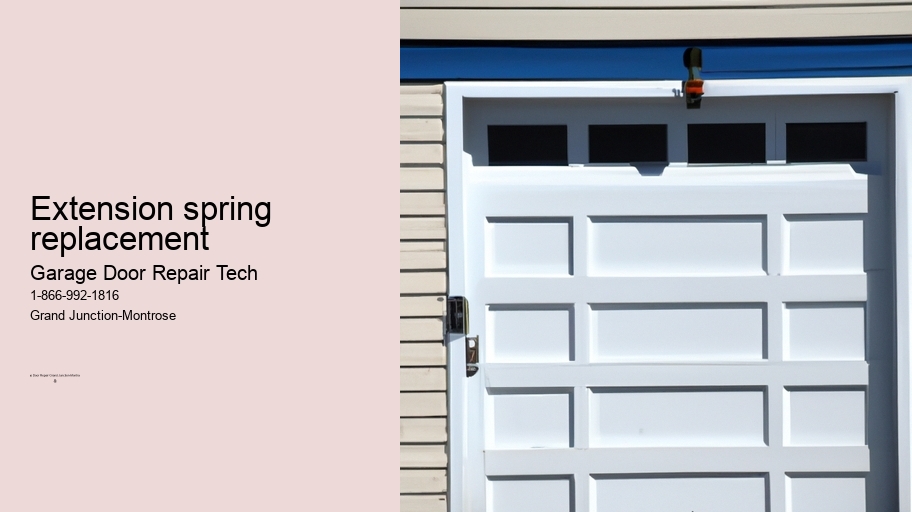
Understanding extension springs in garage doors is crucial for homeowners (like you)! These springs are a vital component of your garage door system, responsible for counterbalancing the weight (tension) and enabling smooth operation. However, over time, these springs may wear out (due to constant use) or break unexpectedly, requiring replacement. Knowing how extension springs function and recognizing signs of potential issues can help you avoid costly repairs (!).
Firstly, let's delve into what extension springs are! They are long coils (attached) to either side of your garage door (overhead). When the door opens or closes, these springs stretch and contract to provide the necessary force (resistance). This assists in balancing the weight of the door so that it can be easily lifted by hand or with a garage door opener. Without properly functioning extension springs, your garage door might become heavy and difficult to operate.
Signs that indicate a need for extension spring replacement include visible wear on the springs themselves, such as gaps between coils or rust formation (!). Additionally, if your door begins to open unevenly or struggles to stay fully open without assistance (!), it could be an indication of worn-out extension springs. In some cases, you might even hear strange noises during operation, like creaking or grinding sounds (-that are not normal), which could also imply issues with your extension springs.
When faced with these warning signs (-of possible failure), it is important not to neglect them! Continuing to operate your garage door with damaged or broken extension springs can lead to further damage and potentially dangerous situations (-that should be avoided at all costs)! Seeking professional help from a qualified technician is essential when replacing extension springs as they possess the necessary expertise and tools required for this task (-which should not be attempted by amateurs).
In conclusion (+to wrap things up), understanding how extension springs work within your garage door system is imperative for ensuring its proper functionality (+to keep everything running smoothly)! By recognizing potential signs of wear or damage, you can address issues promptly and avoid more significant problems (-that may arise). Remember, safety should always be a top priority (!), so never hesitate to seek professional assistance when dealing with extension spring replacement.
Signs that indicate the need for spring replacement can be easily identified through certain key indicators. In order to avoid potential accidents or damages, it is crucial to pay attention to these signs and take prompt action when necessary. (By all means), one of the most common signs that your extension springs may need replacement is a noticeable decrease in their performance. If you observe that the springs are not functioning as effectively as before, it could be an indication that they are worn out and require immediate attention.
Another telltale sign is when you notice any unusual noises coming from the springs (of course). If you hear strange creaking sounds or squealing noises while operating the door, this is a clear indication that something is wrong with the springs. Ignoring such warning signs can lead to further damage and more costly repairs in the future.
In addition, keep an eye out for any visible wear and tear on the springs (believe me). Over time, extension springs can become rusty, corroded, or even develop cracks. These physical changes weaken their overall structure and make them prone to breaking. Therefore, if you spot any of these visual cues on your springs, it's crucial to replace them promptly.
Furthermore, if your garage door starts behaving erratically or becomes difficult to open or close smoothly (you know), this could also point towards faulty extension springs. A malfunctioning door indicates that its components are not working harmoniously together - including the extension springs. Neglecting this issue will only worsen matters and might eventually lead to complete failure of the spring system.
To sum up (to wrap things up), keeping an eye out for signs such as decreased performance, unusual noises, visible wear and tear, and erratic door behavior can help identify when it’s time for extension spring replacement. Remember (trust me), addressing these issues early on will help prevent further damage and ensure smooth operation of your garage door system!
When replacing extension springs, it is important to take precautions and safety measures. (Oh boy), this task can be dangerous if not done correctly! Therefore, it is essential to follow these guidelines before attempting the replacement.
Firstly, (by all means), ensure that you have the proper tools for the job. Using inappropriate tools may cause injury or damage. (Heck), no one wants that happening while working on springs! So, make sure you have a good grip on your wrench and wear protective gloves.
Secondly, (come on now), always disconnect power sources before starting any work. This applies to extension spring replacement as well! Electricity and springs do not mix well together. So, turn off the power switch or unplug any electrical devices nearby to avoid getting shocked.
Next, (for crying out loud), never attempt to replace extension springs while alone. Having someone else present can provide assistance in case of emergencies. Plus, it's always more fun doing DIY projects with a buddy around!
Furthermore, (you know what I'm saying?), take note of the weight capacity of the new extension springs. Installing ones that cannot handle the load may result in accidents or malfunctioning garage doors. So, double-check those weight limits and choose appropriate springs accordingly.
In addition, (seriously though), inspect your garage door system thoroughly before replacing extension springs. Look for any signs of wear and tear on cables, pulleys, rollers, and tracks. If anything seems worn out or damaged beyond repair,(no way José) replace them along with the springs for optimal performance.
Lastly,(I mean come on!), always read and follow the manufacturer's instructions carefully when replacing extension springs.(Duh!) They provide valuable information about installation techniques specific to your garage door model.
In conclusion,(to sum it up), taking precautions and safety measures prior to replacing extension springs is crucial for a successful and safe outcome.(Obviously!) By using proper tools, disconnecting power sources, having assistance, considering weight capacity, inspecting the garage door system,(you know?) and following instructions, you can ensure a smooth replacement process. So (in any case), don't rush into it! Take your time to do it right and avoid unnecessary mishaps.(Geez!) Happy spring replacing!
Are you ready to tackle the task of replacing your old extension springs? Well, fear not! In this guide, I will walk you through a step-by-step process (that even a novice can follow) to remove those pesky old springs and replace them with shiny new ones. So let's get started!
First things first, ensure that you have all the necessary tools handy. This includes a wrench, pliers, safety goggles, and gloves. Safety is paramount when dealing with these springs as they are under tension (unlike soft kittens)! Always remember to wear protective gear to avoid any potential mishaps.
Now, before we dive into the replacement process, it's important to note that extension springs can be quite dangerous if not handled properly. Therefore, it is strongly advised (by experts) to seek professional help if you feel unsure about tackling this task on your own. Safety should always be your top priority!
Once you've gathered your courage and gear, begin by locating the extension springs on both sides of your garage door. These springs are typically attached near the upper tracks of the door system. Once found (hooray!), take a moment to inspect them for any visible signs of wear or damage.
To remove the old extension springs safely, start by placing a sturdy ladder beneath the spring area. Carefully position yourself on the ladder and use pliers to unhook one end of the spring from its mounting bracket (remember: righty tighty, lefty loosey). Repeat this step for each spring until they are all detached.
Now comes the trickiest part – releasing tension from each spring! Slowly lower the garage door until there is no weight or tension on the springs. Keep in mind that sudden movements may cause injury or damage (ouch!). Be patient and take your time during this crucial step.
With no tension on the old extension springs anymore (!), carefully slide them out from their track brackets and set them aside. Make sure to handle them with caution as they can still be quite springy (like a jack-in-the-box)!
Congratulations! You have successfully removed the old extension springs. Give yourself a pat on the back for a job well done. Now, it's time to install those shiny new springs and enjoy the smooth operation of your garage door once again.
In conclusion, replacing extension springs may seem daunting at first, but by following this step-by-step process and prioritizing safety (!), you can successfully complete the task. Remember, if you feel unsure or uncomfortable during any stage of the process, seek professional assistance (better safe than sorry)!
Installing new extension springs correctly is crucial for proper functioning and safety. When replacing extension springs, it is important to follow the correct procedure (indeed) to avoid accidents and ensure optimal performance.
Firstly, it's essential to gather all the necessary tools: a wrench, pliers (yup), safety goggles, and of course, the new extension springs. Before beginning the replacement process, make sure to disconnect the power supply (whoops!) as a precautionary measure. Safety should always be prioritized when handling any kind of mechanical parts.
Once you have taken these precautions, start by releasing tension from the existing springs. This can be done by gradually unwinding them using pliers or a suitable tool. Ensure that you do this step cautiously (oopsie daisy!), as releasing tension abruptly can cause injury or damage to surrounding objects.
Next (well), remove the old extension springs carefully and set them aside. Inspect them thoroughly for any signs of wear or damage. If there are any issues with the old springs (uh-oh!), it is highly recommended to replace them entirely instead of attempting repairs.
Now comes the exciting part - installing the new extension springs! Begin by attaching one end of each spring securely onto its respective mounting bracket. Make sure that they are firmly in place before proceeding further (hallelujah!). It's also essential to double-check that both ends are properly aligned with their designated anchor points.
After confirming proper placement, gradually wind up each spring using pliers or another suitable tool until you reach the desired tension level. Be cautious not to overtighten them as this could lead to excessive strain on your garage door system (*gasp*).
Finally, once you have successfully installed and adjusted all new extension springs correctly (!), perform a thorough inspection of your entire garage door system. Check for smooth operation without any unusual noises or jerky movements (*whew*). If everything seems fine upon testing, you can rest assured that your new extension springs are functioning optimally and your garage door is safe to use.
In conclusion (well then), the installation of new extension springs must be carried out with utmost care and attention to detail. By following the correct procedure and taking necessary precautions, you can ensure both the proper functioning of your garage door system and the safety of yourself and others (!). So go ahead, replace those old springs, and enjoy a well-functioning garage door!
When it comes to replacing extension springs, testing and adjusting the tension of the new springs is a critical step (in order to ensure proper functionality). This process involves carefully assessing the tension levels of the springs and making any necessary adjustments in order to achieve optimal performance. By doing so, we can prevent potential malfunctions or accidents that may arise from improper tension. Let's explore this topic further and delve into the steps involved in testing and adjusting the tension of new extension springs.
To begin with, (let me explain) why it is essential to test and adjust the tension of replacement extension springs. Extension springs play a vital role in various mechanical systems by providing force when they are stretched or extended. If the tension is too loose or too tight, it can lead to issues such as excessive vibrations, erratic movements, or even complete failure of the spring mechanism. Therefore, ensuring that the tension is properly calibrated for each specific application is crucial for optimal performance.
Now let's move on to discussing how to test and adjust the tension of new extension springs. First (and foremost), you need to have a proper understanding of your specific spring system and its requirements. This includes identifying factors such as load capacity, desired deflection rate, and overall dimensions of the spring. Once you have gathered this information, you can proceed with testing and adjusting.
To start testing (the) tension, attach one end of (the) extension spring securely while leaving (the other) end free. Apply an initial load slowly until you reach a desired deflection point. Then measure (the) length between two fixed points on (the) spring using a measuring tape or caliper device. This measurement will give you an indication of how much force is being exerted on (the) spring at that particular deflection rate.
Next, if necessary,(you should make )adjustments in order to achieve the desired tension level for your replacement extension spring(s). This can be done by either tightening or loosening the spring's tension. For example, if the spring seems too loose (or not tight enough), you can increase the tension by adding more force during testing and re-measuring the length to ensure it meets the required specifications.
In conclusion, testing and adjusting the tension of new extension springs is a crucial step in their replacement process. By carefully assessing and calibrating the tension levels, we can ensure proper functionality and prevent potential malfunctions or accidents. Remember to gather all necessary information about your specific spring system before proceeding with testing. Make any adjustments as needed to achieve optimal tension levels for your particular application. So (overall), don't neglect this important step when replacing extension springs!
When it comes to maintaining garage door extension springs, there are several tips that can help ensure they stay in good condition (despite the constant wear and tear they endure). Extension spring replacement can be a costly and time-consuming process, so it's important to take proper care of them to avoid unnecessary expenses. Here are some practical suggestions for keeping your garage door extension springs in top shape!
Firstly, regular lubrication is key! Applying lubricant to the springs at least once every six months will prevent them from getting stuck or rusting. Neglecting this simple task could lead to poor performance and even potential damage to the garage door mechanism! Additionally, make sure to inspect the springs regularly for any signs of wear or fraying. If you notice any issues, such as coils coming undone or gaps between them, immediate action is necessary.
Another important aspect of maintenance is checking the balance of your garage door. A properly balanced door ensures that the extension springs do not bear excessive weight, which can cause premature wear and tear (not to mention safety hazards!). To test the balance, simply disconnect the opener while the door is closed and manually lift it halfway. If it stays in place without assistance, then it's likely well-balanced; otherwise, adjustments should be made by a professional technician.
Furthermore, never attempt to adjust or replace extension springs yourself unless you have proper knowledge and experience (unless you want a potentially disastrous outcome!). These springs are under high tension and mishandling them can result in serious injuries or property damage. Instead, leave this job to trained professionals who have the expertise and tools required for safe replacement.
In conclusion (To sum up), maintaining your garage door extension springs doesn't have to be complicated or expensive. With regular lubrication, visual inspections, balancing checks, and leaving spring replacement tasks to professionals when needed (if you value your well-being!), you can keep your garage door operating smoothly for years to come. Remember, taking preventive measures now will save you from major headaches later on (and spare your wallet too!). So, don't neglect the care of your extension springs and ensure they remain in good condition for optimal garage door performance!
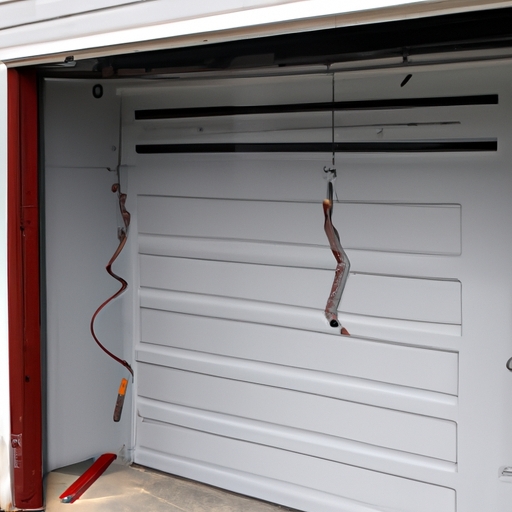
Are you tired of dealing with a garage door that's always getting stuck or making annoying noises?. Well, look no further!
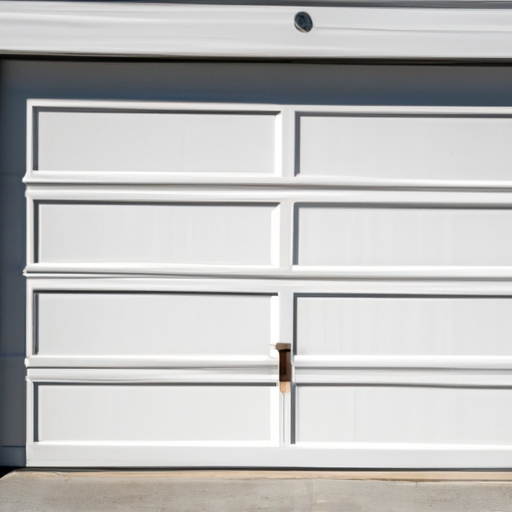
Posted by on 2024-02-02
Curious about why your garage door isn't working properly?. Well, fret not, for we have the ultimate solution to all your troubles - our top-notch spring replacement service!
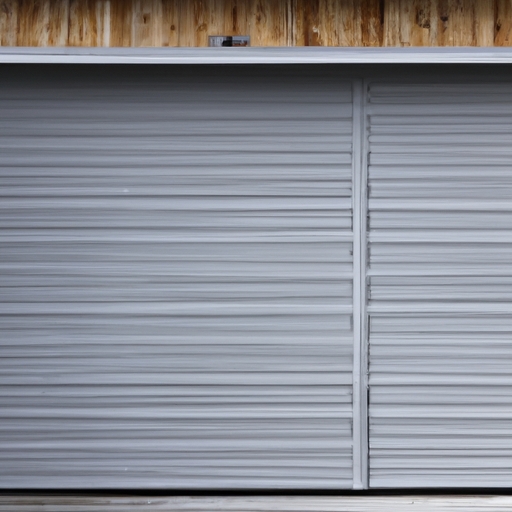
Posted by on 2024-02-02
Are you tired of dealing with a faulty garage door?. Well, worry no more!
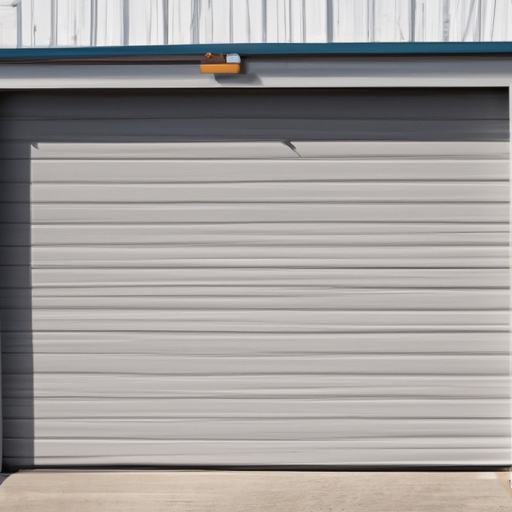
Posted by on 2024-02-02
Are you experiencing issues with your garage door? (Well), look no further!. We are here to help you uncover the key to success with our reliable and efficient spring replacement service. (So) don't let a malfunctioning garage door bring you down, (nope) it's time to take action!
When it comes to ensuring safety during spring replacement, (uh-oh) following tips and precautions is crucial.
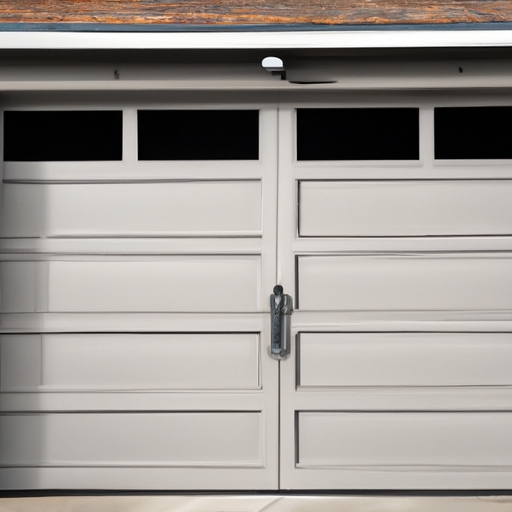
Posted by on 2024-02-02